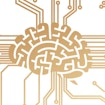Circuits, Cognition & Behavior

Autism spectrum disorder features atypical visual attention, perhaps especially to social stimuli such as pictures of faces. To collect large-sample data on this topic, Ralph Adolphs’ lab plans to collect eye tracking data from several thousand people over the Internet. This will provide a large survey across the autism spectrum and also allow longitudinal studies from the comfort of people's homes.

One of the challenges in assessing rodent models of autism/intellectual disability is linking specific genetic alterations to changes in neural function and behavior. Paul Dudchenko plans to address this challenge by using the head direction cell system — comprised of neurons that encode direction — to characterize rigid and flexible neural coding in Fmr1, Grin2b and Syngap1 knockout rats. This characterization will provide rich data on both the neural systems and the behavioral capacities of these three rodent models.

Core characteristics of ASD are dominated by problems with social engagement that have been proposed, in part, to emanate from an inability to interpret others’ intentions. Observational social learning is also utilized by many animals, including rodents, however it has yet to be assessed in ASD models. Anis Contractor’s lab is developing methods to assess whether observational learning is disrupted in mouse models of ASD, and in parallel, determine the underlying neural circuit mechanisms.

Somatosensory hyper- or hyposensitivity is commonly associated with ASD and early tactile challenges can contribute to certain aspects of ASD-related social phenotypes. Kate Hong’s lab aims to uncover mechanisms that control tactile sensitivity and adaptation in the superior colliculus by performing simultaneous behavioral and electrophysiological recordings in mouse models of ASD.

Understanding the neurobiological functions of genes that increase risk for ASD is a critical step in therapy development. In the current project, Summer Thyme and colleagues aim to define how such genes impact zebrafish brain development, brain activity, and behavior. These studies also set the stage for drug screening using zebrafish mutants.
- Previous Page
- Viewing
- Next Page